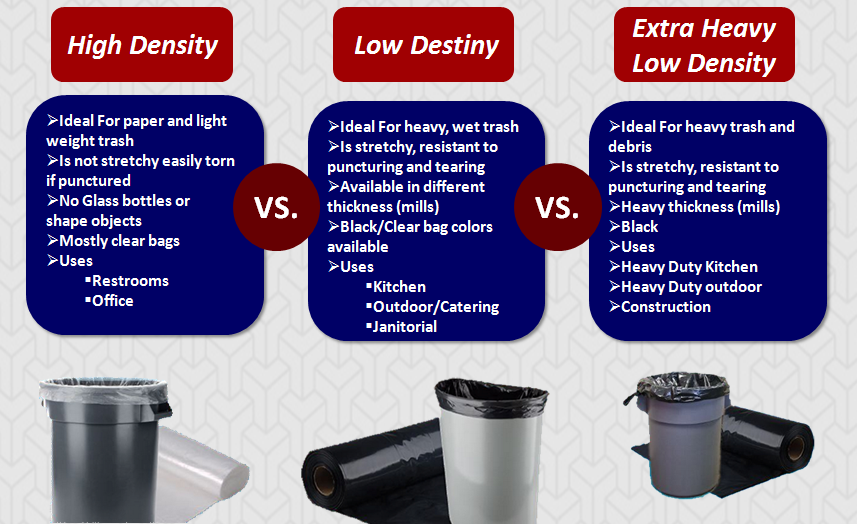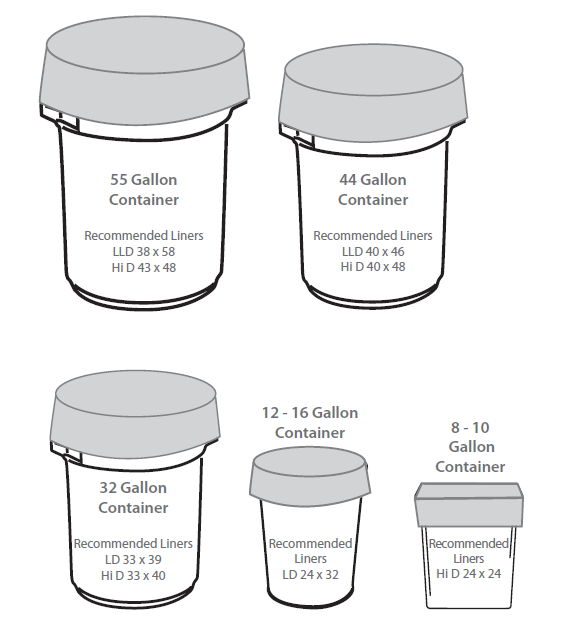
Step 1: Choose plastic type and gauge:
Linear Low Density Bags
(LLD Bags)
Used for rough objects under tough transport conditions.
i.e.: These liners are very strongand more resistant to tearing,but handle lower load capacitiesthan Hi–D liners.
Suggested applications:
- Sticks
- Rough yard trimmings
- Metal w/sharp edges
- Objects w/rough corners
- Plastic eating utensils
- Abusive transport conditions
- Glass bottles
- Food w/rough edges (crab legs)
Linear Low Density Bags
(LLD Bags)
Approximate Gauge Equivalents
| Light |
.30 - .49 Mil |
| Medium |
.50 - .60 Mil |
| Heavy |
.61 - .74 Mil |
| Extra Heavy |
75 - .80 Mil |
| Super Tuf |
81 - 1.0 Mil |
| Super Hvy |
1.1 - 1.2 Mil |
| XXH |
1.3 - 1.9 Mil |
| XXXH |
2.0 - 3.0 Mil |
In general, use light to heavy gauges for smaller cans; Extra Heavy to Super Heavy for midsize/large cans; Super Heavy to XXXH for very large cans.
Hi Density Bags
(Hi-D Bags)
Used for paper and non-rough objects under moderate transport conditions.
i.e.: These liners are very strong and handle higher load capacities than Low–D liners, but are less resistant to tears once punctured.
Suggested Hi-D applications:
- Office waste baskets
- Dirt, grass, rags
- Paper, paper plates/cups
- Cans w/out sharp edges
- Food w/out sharp edges
- Smooth heavy objects
Hi Density Bags
(Hi-D Bags)
Approximate Gauge
| Refuse |
6 Mic |
| Light |
7 - 9 Mic |
| Medium |
10 - 12 Mic |
| Heavy |
13 - 14 Mic |
| Extra Heavy |
15 - 17 Mic |
| XXH |
18 - 24 Mic |
In general, use light to medium gauges for smaller cans; Heavy for midsize/large cans; Extra Heavy for very large cans.
Step 2: Match product with your can
Most common cans and recommended liner sizes




